Comments / Questions (47)
![]() Helle Arrøe wrote:
Helle Arrøe wrote:
Mener i ikke to ret og en vrang fra retsiden?
03.03.2016 - 15:33DROPS Design answered:
Jo selvfølgelig Helle, du har ret :)
03.03.2016 - 15:53
![]() Helle Arrøe wrote:
Helle Arrøe wrote:
Når pind tre skal strikkes er det så tre ret en vrang to ret og en vrang?
03.03.2016 - 14:55DROPS Design answered:
Ja det stemmer, så du fra retsiden får (2 ret, 1 vrang) over hele pinden med 3 m retstrik i hver side. God fornøjelse!
03.03.2016 - 15:14
![]() Wilma wrote:
Wilma wrote:
Kan deze trui gebreid worden met combinatie van Brushed-alpaca-silk met Bomull-Lin? dank voor uw advies.
18.02.2016 - 15:38DROPS Design answered:
Hoi Wilma. Je kan vervangen door 1 draad Bomull-Lin / 1 draad Brushed, maar denk erom dat Bomull-Lin zwaarder zal vallen dan 1 draad Brushed (85 meter per 50 gr in vergelijking met 280 m per 50 gr). Maar brei ook eerst een proeflapje om te zien of je tevreden bent met het resultaat. Veel plezier mee.
24.02.2016 - 17:05
![]() Angelika Van Der Horst wrote:
Angelika Van Der Horst wrote:
Ben ook benieuwe naar het antwoord voor Karin Rochell, het rippatroon moet aan de goede kant zijn 2 links, 1 rechts?
05.02.2016 - 13:22DROPS Design answered:
Hoi Angelika. Je breit boordsteek aan de goede kant: 1 r/2 av, dus op de verkeerde kant brei je dan 2 r/1 av.
10.02.2016 - 15:42
![]() Rolf wrote:
Rolf wrote:
15 cm står det på rad 4.
05.02.2016 - 10:36
![]() Helen Lindblad wrote:
Helen Lindblad wrote:
På bak och framstycket, hur många cm resår ska man sticka?!? Det har ni inte skrivit med. Ärmen har 4 cm resår men bak och fram då?!?
05.02.2016 - 09:15DROPS Design answered:
Hej. 1:a och 2:a randen stickas i resår på fram- och bakstycket, så 5 cm resår (1+4 cm). Lycka till!
05.02.2016 - 12:02
![]() Karin Rochell wrote:
Karin Rochell wrote:
Wird das Rippenmuster tatsächlich 1 M re, 2 M li gestrickt? Der Pullover soll doch auf links gewendet werden. Auf dem Bild sieht das Rippenmuster auf der außen getragenen Seite nach 1M re, 2 M li aus. Dann aber müsste doch beim Stricken die Anordnung 1M li, 2 M re sein!?
31.01.2016 - 15:28DROPS Design answered:
Sie haben Recht, auf dem Bild sieht das Muster nach 1 M re, 2 M li aus, da der Pullover gewendet wird, müsste das Rippenmuster also genau andersherum gestrickt werden. Ich leite das Problem an die Designerinnen weiter, um es prüfen zu lassen.
07.02.2016 - 13:20
![]() Cousseau wrote:
Cousseau wrote:
Vivement les explications !
03.01.2016 - 14:44
![]() Gisèle wrote:
Gisèle wrote:
Hâte d'avoir les explications !
31.12.2015 - 16:33
![]() Unuth wrote:
Unuth wrote:
Bei diesem Modell kann ich gut meine Wollreste verarbeiten, ich freue mich schon auf die Anleitung
31.12.2015 - 16:26
No Worries#noworriessweater |
|
|
|
|
Knitted DROPS jumper with stripes, rib and vents in 2 strands ”Brushed Alpaca Silk”. Size: XS - XXXL.
DROPS 169-9 |
|
|
GARTER ST (back and forth): K all rows. 1 ridge = 2 rows K. STRIPES: Adjust so that last row in every stripe is from WS, i.e. first row in every stripe is from RS. Work stripes with 2 strands as follows: Stripe 1: 1 cm with coral and light sea green Stripe 2: 4 cm with off white and light sea green Stripe 3: 4-4-5-5-6-6-7 cm with light sea green and light grey green Stripe 4: 2 ridges with 2 strands denim blue Stripe 5: 4-4-5-5-4-6-7 cm with light grey green and off white Stripe 6: 3 cm with light grey green and heather Stripe 7: 5-5-6-6-7-7-7 cm with light sea green and denim blue Stripe 8: 4 cm with light grey green and off white Stripe 9: 2½ cm with light grey green and light beige Stripe 10: 1 cm with heather and light beige Stripe 11: 2½ cm with heather and coral Stripe 12: 1 cm with light sea green and light beige Stripe 13: 2 cm with light grey green and off white Stripe 14: 4 cm with coral and off white Stripe 15: 4-4-5-5-6-6-6 cm with light beige and off white Stripe 16: 4 cm with light beige and light sea green Stripe 17: 1 cm with light grey green and denim blue Stripe 18: 3 cm with light grey green and off white Stripe 19: Work the rest of the jumper in off white and light sea green. INCREASE TIP: Always inc from RS. Inc 1 st by making 1 YO, on next row P YO twisted to avoid holes. ---------------------------------------------------------- JUMPER: Worked back and forth on circular needle to make room for all the sts. Jumper is worked in stocking st but sewn tog with WS outwards. BACK PIECE: Cast on 73-76-82-88-94-100-106 sts on circular needle size 6 mm with 1 strand coral and 1 strand light sea green. P 1 row from RS. Then work in STRIPES - see explanation above - as follows from WS: Work 3 sts in GARTER ST - see explanation above - rib = K 1/P 2 until 4 sts remain, K 1, finish with 3 sts in garter st. When 2nd stripe has been worked, switch to circular needle size 8 mm. Work in stocking st with 3 sts in garter st in each side of piece and dec 11-10-12-12-14-14-14 sts evenly on first row = 62-66-70-76-80-86-92 sts. When piece measures 15 cm, cast on 1 edge st in each side of piece at the end of the next 2 rows = 64-68-72-78-82-88-94 sts. Work in stocking st with 1 edge st in garter st in each side of piece. REMEMBER THE KNITTING TENSION When piece measures 43-44-45-46-47-48-49 cm, cast off 4-4-4-5-5-5-5 sts for armhole at beg of the next 2 rows = 56-60-64-68-72-78-84 sts. When 18th stripe has been worked (piece measures 52-52-56-56-58-60-62 cm), adjust so that last row is from WS, work 19th stripe and inc 11-10-12-11-13-13-13 sts evenly on first row = 67-70-76-79-85-91-97 sts. Switch to circular needle size 6 mm. On next row from WS work as follows: Work rib = K 1/P 2, finish with K 1. Continue with K over K and P over P until piece measures 64-66-68-70-72-74-76 cm. Insert 1 marker after 20-21-23-24-27-29-32 sts in from each side (marks shoulder seams). Cast off sts with K over K and P over P on circular needle size 8 mm. FRONT PIECE: Cast on and work as back piece. SLEEVE: Worked back and forth on needle. Cast on 29-29-32-32-35-35-35 sts on circular needle size 6 mm with 1 strand off white and 1 strand light sea green. P 1 row from RS. Then work as follows from WS: Work rib K 1/P 2 with 1 edge st in garter st in each side of piece. When piece measures 4 cm, P from WS and dec 3-3-4-4-5-5-5 sts evenly = 26-26-28-28-30-30-30 sts. Switch to circular needle size 8 mm. Work in stocking st with 1 edge st in garter st in each side and work 3rd-13th stripe. When piece measures 8 cm, inc 1 st inside 1 edge st in garter st in each side of piece - READ INCREASE TIP! Repeat inc every 3½-3-3-2½-2½-2-2 cm 10-11-11-12-12-14-15 more times = 48-50-52-54-56-60-62 sts. When 3rd-13th stripe has been worked 1 time, finish piece with 1 strand light sea green and 1 strand off white. Cast off when piece measures 47-47-46-45-45-43-41 cm (shorter measurements in the larger sizes because of wider shoulders). Knit another sleeve. ASSEMBLY: Sew jumper tog with WS outwards. Sew shoulder seams in to markers. Sew in sleeves with WS outwards, sew sleeve seams inside 1 edge st, sew side seam inside 1 edge st down to the 3 sts in garter st in each side (= approx. 15 cm vent). |
|
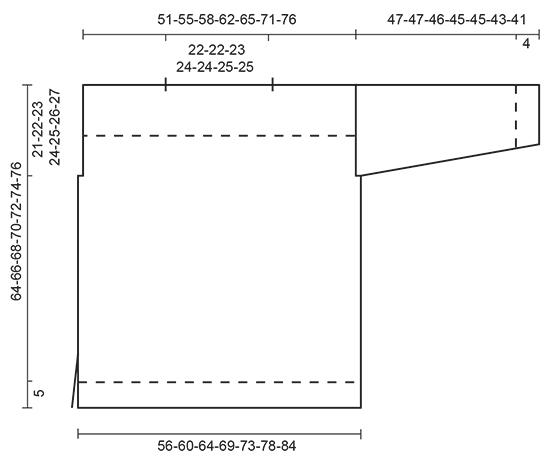 |
|
Have you finished this pattern?Tag your pictures with #dropspattern #noworriessweater or submit them to the #dropsfan gallery. Do you need help with this pattern?You'll find 17 tutorial videos, a Comments/Questions area and more by visiting the pattern on garnstudio.com. © 1982-2025 DROPS Design A/S. We reserve all rights. This document, including all its sub-sections, has copyrights. Read more about what you can do with our patterns at the bottom of each pattern on our site. |












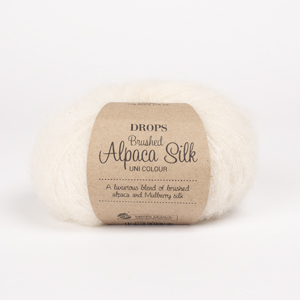
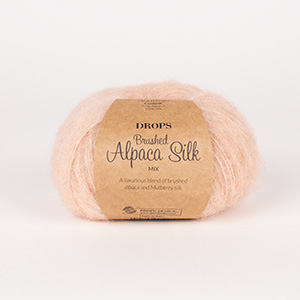


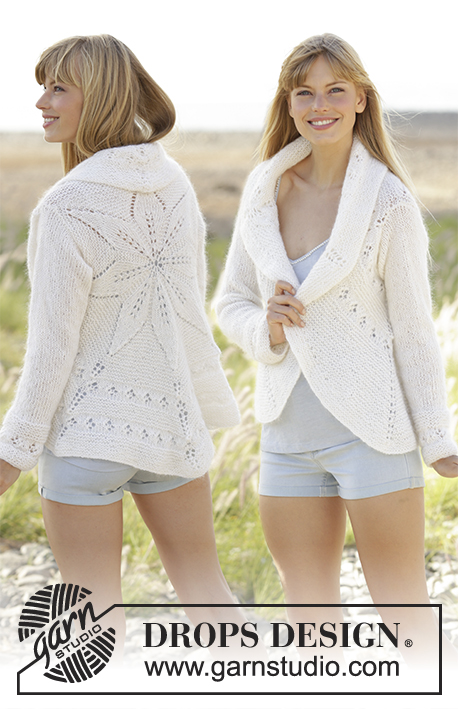


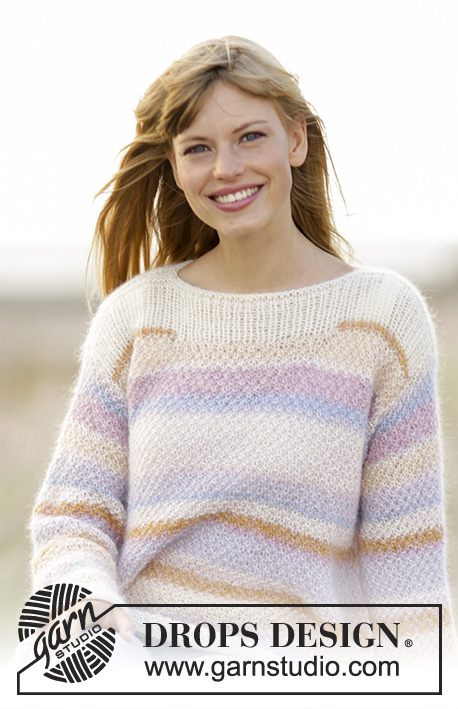































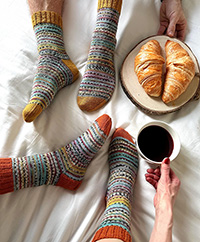
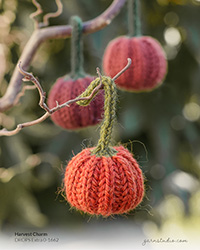



Post a comment to pattern DROPS 169-9
We would love to hear what you have to say about this pattern!
If you want to leave a question, please make sure you select the correct category in the form below, to speed up the answering process. Required fields are marked *.